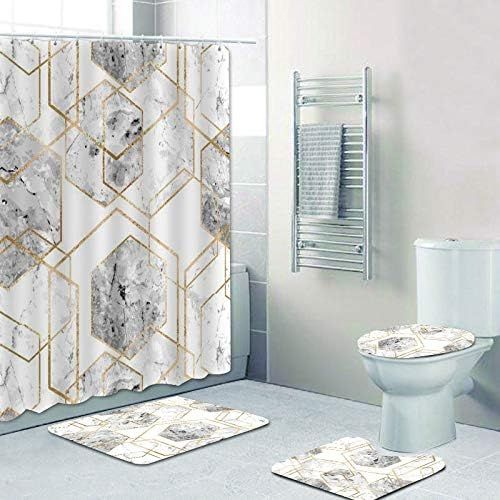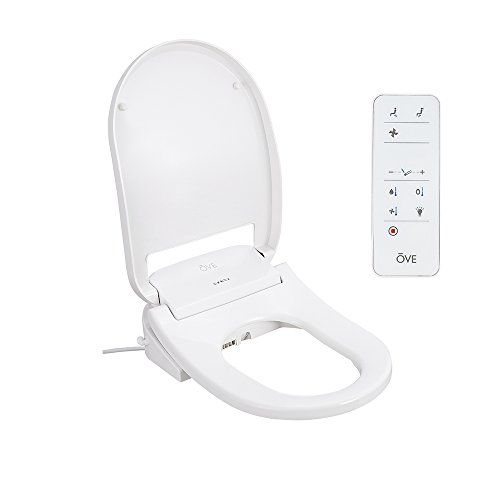Do Bathroom Doors Open In Or Out
Are you curious about whether bathroom doors open in or out?
In this article, we will explore the factors that determine the direction in which bathroom doors swing. Building codes, accessibility standards, and safety regulations play a significant role in this decision.
Additionally, space and layout considerations, privacy and comfort factors, traffic flow, and efficiency also influence the direction of bathroom door swing. Design and aesthetics, as well as cultural and regional practices, may also come into play.
Furthermore, maintenance and cleaning requirements are essential factors to consider. By examining common practices in both public and residential settings, we can gain a better understanding of the prevailing norms for bathroom door swing.
So if you’ve ever wondered about the rationale behind the direction in which bathroom doors open, keep reading to uncover the technical details and precise explanations behind this architectural choice.
Key Takeaways
- Door swing direction in bathrooms can impact maintenance and user experience.
- Public bathroom doors typically swing outward, allowing for easier access in emergencies and facilitating cleaning without obstruction.
- On the other hand, residential bathroom doors often swing inward, prioritizing privacy and convenience.
- Understanding door swing preferences is crucial when considering the importance of cleaning and maintenance in bathrooms.
Building Codes and Regulations
Did you know that building codes and regulations dictate whether bathroom doors should open in or out?
When it comes to building permits, it’s crucial to comply with fire safety regulations. These regulations ensure that occupants can safely exit the building in case of an emergency.
One important aspect of fire safety is the direction in which bathroom doors open. According to building codes, bathroom doors in commercial buildings should open outwards. This allows for easy escape in case of a fire or other emergency.
By opening outwards, bathroom doors don’t obstruct the flow of foot traffic and allow for a quick and efficient evacuation.
It’s important to follow these regulations to ensure the safety of building occupants and to avoid any violations during inspections.
Accessibility and Safety Standards
One important aspect to consider regarding accessibility and safety standards is how the entrances to restrooms function. When it comes to universal design and barrier-free access, bathroom doors should open outward. This design choice allows for easier access and maneuverability for individuals with mobility aids, such as wheelchairs or walkers.
Additionally, outward-opening doors also provide more space inside the restroom, reducing the risk of collisions or accidents. To ensure compliance with accessibility regulations, it’s crucial to follow these guidelines:
- Door width should be a minimum of 32 inches to accommodate wheelchairs.
- Door handles should be easy to grasp and operate, such as lever handles or push plates.
- The door should have a clear opening width of at least 36 inches to allow for easy entry and exit.
- Automatic door openers or sensors can be installed to further enhance accessibility for individuals with limited mobility.
By implementing these measures, public restrooms can provide a safe and inclusive environment for all individuals.
Space and Layout Considerations
The spacious and well-designed layout of restrooms plays a crucial role in ensuring accessibility and comfort for all individuals. In small spaces, it becomes even more important to carefully consider the door swing of bathroom doors.
The door swing refers to the direction in which the door opens. When dealing with limited space, it is generally recommended that bathroom doors open outward. This allows for more efficient use of the available space and prevents any potential obstruction or congestion inside the restroom.
Outward swinging doors also provide easier access for individuals using mobility aids, such as wheelchairs or walkers. Additionally, in emergency situations, outward swinging doors can be easily opened from the outside, ensuring the safety of those inside.
Overall, considering the door swing in small spaces is essential for optimizing accessibility and safety in restrooms.
Privacy and Comfort Factors
Privacy and comfort are key factors that must be considered when designing restrooms, as they greatly impact the overall experience for individuals. When it comes to bathroom doors, the direction in which they open can have a significant impact on both privacy and comfort.
Toilet etiquette and user preferences play a crucial role in determining whether bathroom doors should open in or out. Some individuals may prefer doors that open inwards, as this provides a sense of security and privacy. Others may prefer doors that open outwards, as this allows for easier access and exit in case of emergencies.
Ultimately, the decision on whether doors should open in or out should be based on user comfort and safety, while also considering the overall layout and space constraints of the restroom.
Traffic Flow and Efficiency
Considering the smooth flow of people and the efficient use of space, it’s crucial to design restrooms with a strategic layout that maximizes convenience and minimizes congestion.
Here are three key factors to consider when optimizing traffic flow and efficiency in bathroom design:
-
Entrance and exit placement: The location of the entrance and exit doors should be carefully planned to allow for a natural flow of traffic. Placing them in close proximity to each other can help prevent bottlenecks and congestion.
-
Stall arrangement: The positioning of the stalls should be organized in a way that allows for easy navigation and swift movement within the restroom. This can include having wider aisles and avoiding cramped spaces.
-
User preferences: It’s important to take into account the preferences of restroom users when designing the layout. This can involve providing clear signage, ensuring adequate lighting, and considering the needs of different user groups such as individuals with disabilities.
By considering these flow optimization techniques and user preferences, restroom design can greatly enhance traffic flow and efficiency, providing a more pleasant experience for all users.
Design and Aesthetics
To truly appreciate your restroom experience, let’s explore how you can infuse design and aesthetics to create a visually captivating and inviting space. Interior design plays a crucial role in enhancing the overall user experience. By carefully selecting colors, materials, and fixtures, you can create a harmonious and pleasing environment. The right combination of lighting, ventilation, and acoustics can also contribute to a comfortable and enjoyable atmosphere.
To give you a better idea, here is a 2 column and 4 row table showcasing different design elements that can be incorporated into your bathroom:
| Design Element | Description |
|---|---|
| Color Palette | Choose colors that evoke tranquility and complement the space. |
| Materials | Use durable and easy-to-maintain materials for longevity. |
| Fixtures | Opt for sleek and modern fixtures to enhance the overall aesthetic. |
| Lighting | Incorporate layered lighting for functionality and ambiance. |
By paying attention to these details, you can transform your bathroom into a visually stunning and comfortable oasis that enhances your overall restroom experience.
Cultural and Regional Practices
Explore how different cultures and regions incorporate unique practices into their restroom experiences, adding a touch of diversity and intrigue to your own personal oasis.
Cultural norms and historical influences play a significant role in determining whether bathroom doors open in or out. In some cultures, such as in Europe, it’s common for bathroom doors to open inward. This design choice is rooted in historical influences, where privacy and security were paramount concerns. Opening the door inward allowed individuals to easily barricade themselves inside for protection.
On the other hand, in many Western cultures, including the United States, bathroom doors typically open outward. This design choice is influenced by accessibility regulations and safety considerations. In emergency situations, an outward-opening door allows for quick and easy evacuation.
Understanding these cultural and regional practices can provide valuable insights into the design and functionality of bathroom doors around the world.
Maintenance and Cleaning Requirements
Maintenance and cleaning requirements for restroom facilities can vary depending on the cultural and regional practices observed, with meticulous attention to detail ensuring a pristine and hygienic environment for all users. To achieve this, specific cleaning techniques and maintenance schedules need to be followed.
Here are four essential elements to consider:
-
Daily cleaning: Regularly disinfecting all surfaces, including toilets, sinks, and floors, using appropriate cleaning agents is crucial to prevent the spread of germs and maintain cleanliness.
-
Deep cleaning: Periodically, a thorough deep cleaning should be conducted, targeting hard-to-reach areas like grout lines, corners, and behind fixtures to eliminate any hidden dirt or bacteria.
-
Maintenance schedule: Establishing a routine maintenance schedule for fixtures, such as faucets, toilet mechanisms, and hand dryers, ensures they’re in proper working condition, reducing the risk of malfunctions and potential hygiene issues.
-
Restocking supplies: Regularly checking and restocking restroom supplies like toilet paper, soap, hand sanitizer, and paper towels guarantees an uninterrupted and pleasant user experience.
By adhering to these cleaning techniques and maintenance schedules, restroom facilities can maintain a high level of cleanliness and hygiene for all users.
Common Practices in Public and Residential Settings
When it comes to bathroom doors, understanding door swing preferences is crucial for both public and residential settings. In terms of maintenance, the direction in which the door swings can have a significant impact.
In public settings, it’s common for bathroom doors to swing outward. This allows for easier access in emergency situations and ensures that the door doesn’t block the entrance or exit when opened. Additionally, outward swinging doors make it easier for cleaning staff to access and clean the bathroom without obstruction.
On the other hand, residential settings often have bathroom doors that swing inward. This is mainly due to space constraints and the desire for a more private and enclosed bathroom experience. While this may make cleaning slightly more challenging, it’s a trade-off that many homeowners are willing to make for the sake of privacy and convenience.
Understanding these door swing preferences is essential for proper maintenance and ensuring a seamless bathroom experience in both public and residential settings.
Frequently Asked Questions
What are the different types of bathroom doors commonly used in public and residential settings?
In public and residential settings, common types of bathroom doors include hinged doors, pocket doors, and sliding doors. Hinged doors offer secure locking mechanisms, while pocket doors save space. Sliding doors have pros of easy access but cons of limited privacy.
How does the direction in which a bathroom door opens affect accessibility for people with disabilities?
When considering accessible design, the direction in which a bathroom door swings is crucial. It must provide enough space for a person with disabilities to navigate through, ensuring they can easily enter and exit the bathroom.
Are there any specific requirements or recommendations for the size and dimensions of bathroom doors?
When considering the size requirements and installation guidelines for bathroom doors, it is important to ensure that the door is wide enough to accommodate accessibility for people with disabilities, as per building codes and regulations.
What are some common alternatives to traditional swinging doors in bathrooms?
Sliding doors and pocket doors are common alternatives to traditional swinging doors in bathrooms. Sliding doors operate by sliding along a track, while pocket doors slide into a recessed wall cavity. These options maximize space and provide a sleek, modern look.
Are there any specific considerations for bathroom doors in high-traffic areas such as airports or shopping malls?
Considerations for bathroom doors in high-traffic areas include the impact of door design on privacy and comfort. Maintenance and durability are crucial for busy public spaces. Ensure proper materials, sturdy construction, and regular inspections for optimal performance.
Conclusion
In conclusion, when determining the direction in which bathroom doors open, several factors need to be considered.
Building codes and regulations, accessibility and safety standards, space and layout considerations, privacy and comfort factors, traffic flow and efficiency, design and aesthetics, cultural and regional practices, as well as maintenance and cleaning requirements all play a crucial role.
It’s important to carefully assess these aspects to ensure a functional and efficient bathroom door that meets all necessary requirements.













.jpg)








